Cumin Saga Spice Journey: India's Epic Spice Trading Adventure
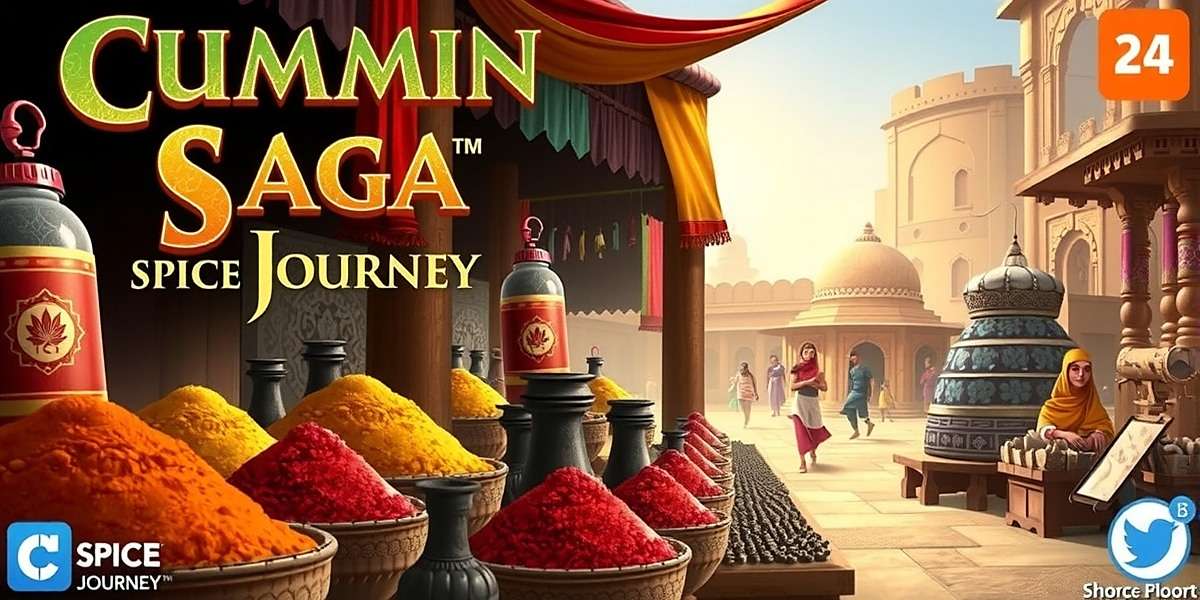
Overview of Cumin Saga Spice Journey
Cumin Saga Spice Journey is not just a mobile game – it's a cultural experience that has captured the hearts of millions of Indian players since its launch in November 2021. Developed by Daman Games, this spice trading simulation takes players on a journey through ancient India's bustling markets, historic trade routes, and diverse cultural landscapes.
What makes Cumin Saga Spice Journey unique is its perfect blend of entertainment and education. While players enjoy the strategic challenges of building a spice trading empire, they also learn about India's rich history, regional cultures, and the vital role spices have played in shaping the nation's economy and identity.
The game's development team worked closely with historians, anthropologists, and regional experts from across India to ensure every detail – from market layouts to traditional clothing – reflects authentic Indian culture. This commitment to accuracy has earned Cumin Saga Spice Journey praise from both players and cultural organizations.
Key Game Statistics 📊
Cumin Saga Spice Journey appeals to a wide range of players – from history enthusiasts fascinated by ancient trade routes to strategy game fans looking for a challenging experience. The game's family-friendly content also makes it popular among parents who appreciate its educational value and positive representation of Indian culture.
Unlike many mobile games that rely on generic settings, Cumin Saga Spice Journey celebrates India's diversity by featuring region-specific content that reflects the unique traditions, languages, and cuisines of different states. This attention to detail has helped the game build a loyal fan base across all parts of India.
Gameplay Mechanics of Cumin Saga Spice Journey
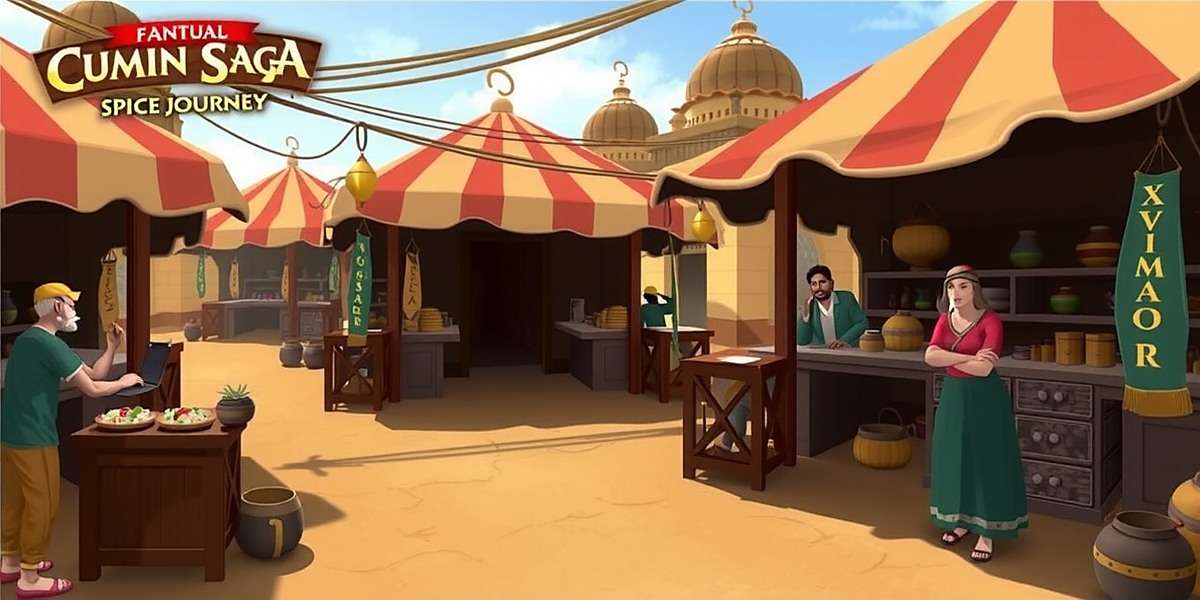
The gameplay of Cumin Saga Spice Journey is designed to be both accessible to new players and deep enough to keep experienced gamers engaged. At its core, the game challenges players to build a successful spice trading business by navigating India's complex market dynamics, regional specialties, and historical trade routes.
Core Gameplay Elements 🔍
1. Spice Trading Dynamics
At the heart of Cumin Saga Spice Journey is its realistic trading system. Each region in the game specializes in certain spices, and prices fluctuate based on supply and demand, seasonal changes, and in-game events. Players must study market trends and plan their routes carefully to maximize profits.
For example, black pepper from Kerala's Malabar Coast fetches higher prices in northern markets like Delhi and Agra, while saffron from Kashmir commands premium rates in southern India. Understanding these regional differences is key to building a successful trading business.
Common spices in the game include cumin (of course!), turmeric, cardamom, cloves, cinnamon, black pepper, saffron, nutmeg, and regional specialties like star anise from Northeast India and asafoetida from Rajasthan.
2. Travel and Exploration
As players progress in Cumin Saga Spice Journey, they unlock new trade routes and cities across India. The game features over 60 historically accurate locations, from the snow-capped Himalayas in the north to the tropical backwaters of Kerala in the south.
Travel between cities isn't without challenges. Players must contend with bandits, harsh weather conditions, and political unrest that can disrupt their caravans. Investing in better transportation – from bullock carts to camel trains – and hiring guards becomes essential as traders expand their operations.
3. Relationship Building
Success in Cumin Saga Spice Journey isn't just about buying low and selling high – it's also about building relationships with key figures in each region. Rulers, local merchants, and temple priests can offer valuable information, exclusive trading rights, or protection from market fluctuations.
Players must learn the art of negotiation and gift-giving, adapting their approach to regional customs. A gift that impresses a Rajput king might not have the same effect on a Tamil Nadu chieftain, requiring players to understand and respect India's cultural diversity.
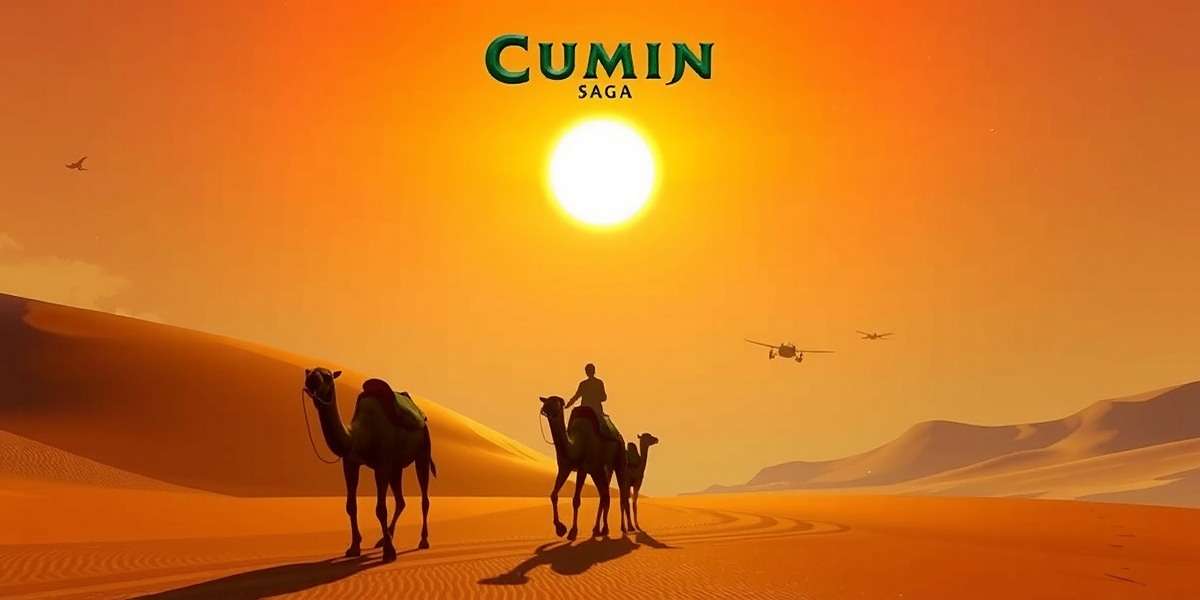
4. Business Expansion
As profits grow, players can invest in various assets to expand their trading empire. This includes establishing warehouses in strategic locations, purchasing spice plantations, and building trading posts along important routes.
Each investment comes with its own risks and rewards. A warehouse in a major city reduces storage costs but requires protection from thieves, while a remote spice plantation might yield high profits but is vulnerable to natural disasters and local conflicts.
5. Dynamic Events System
One of the most popular features of Cumin Saga Spice Journey is its dynamic events system that keeps gameplay fresh and unpredictable. These events range from local festivals that boost spice prices to political upheavals that disrupt trade routes.
Natural events like monsoons, droughts, and floods affect spice availability and prices, requiring players to adapt their strategies. Historical events, such as the arrival of foreign traders or royal weddings, create unique opportunities for savvy merchants.
6. Player Progression
Players progress through various merchant ranks in Cumin Saga Spice Journey, starting as a "Pheriwala" (pedlar) and working their way up to "Seth" (wealthy merchant) and eventually "Mahajani" (banker-merchant). Each rank unlocks new gameplay features, trading privileges, and access to exclusive spices and routes.
This progression system gives players clear goals while unlocking new content that keeps the game engaging for months. The highest ranks even allow players to influence regional politics and shape trade policies, adding a new layer of strategic depth.
Download Statistics and Regional Popularity
Since its launch in November 2021, Cumin Saga Spice Journey has achieved remarkable success in the Indian mobile gaming market. The game crossed 10 million downloads within its first month, a milestone that many established games take years to reach.
As of 2023, Cumin Saga Spice Journey has been downloaded over 78 million times worldwide, with 65 million of those downloads coming from India. This makes it one of the most successful Indian-developed mobile games of all time.
Regional Breakdown in India 🗺️
The game's popularity spans all regions of India, with particularly strong adoption in these states:
- Maharashtra - 14.3 million downloads (22% of total Indian downloads)
- Uttar Pradesh - 11.7 million downloads (18% of total Indian downloads)
- Tamil Nadu - 9.1 million downloads (14% of total Indian downloads)
- Karnataka - 7.8 million downloads (12% of total Indian downloads)
- Gujarat - 6.5 million downloads (10% of total Indian downloads)
- West Bengal - 5.2 million downloads (8% of total Indian downloads)
- Rajasthan - 3.9 million downloads (6% of total Indian downloads)
- Other states - 6.5 million downloads (10% of total Indian downloads)
Player Demographics 👥
The game's popularity extends beyond India's borders, with significant player bases in countries with large Indian diaspora communities. The United States, United Kingdom, Canada, Australia, and Singapore have all seen substantial downloads, introducing non-Indian players to India's rich cultural heritage.
One of the key factors contributing to Cumin Saga Spice Journey's widespread adoption is its optimization for a wide range of devices. The game runs smoothly on everything from high-end smartphones to more affordable models commonly used in rural India, ensuring accessibility across all economic strata.
Cumin Saga Spice Journey follows a freemium model, allowing free downloads with optional in-app purchases. These purchases are primarily for cosmetic items, convenience features, and special spice packs, with no pay-to-win elements that would disadvantage non-paying players.
This fair approach has resonated with the Indian gaming community, resulting in a conversion rate of approximately 6.1% of players making in-app purchases – significantly higher than the industry average of 2-3% for mobile games in India. This demonstrates that Indian players are willing to invest in quality content that respects their time and provides genuine value.
Even more impressive than the download numbers is the game's player retention rate. With over 70% of players returning daily and 87% returning weekly, Cumin Saga Spice Journey has achieved engagement levels that most mobile games can only dream of. This high retention is attributed to regular content updates, seasonal events tied to Indian festivals, and a strong sense of community among players.
Localization and Regional Adaptations
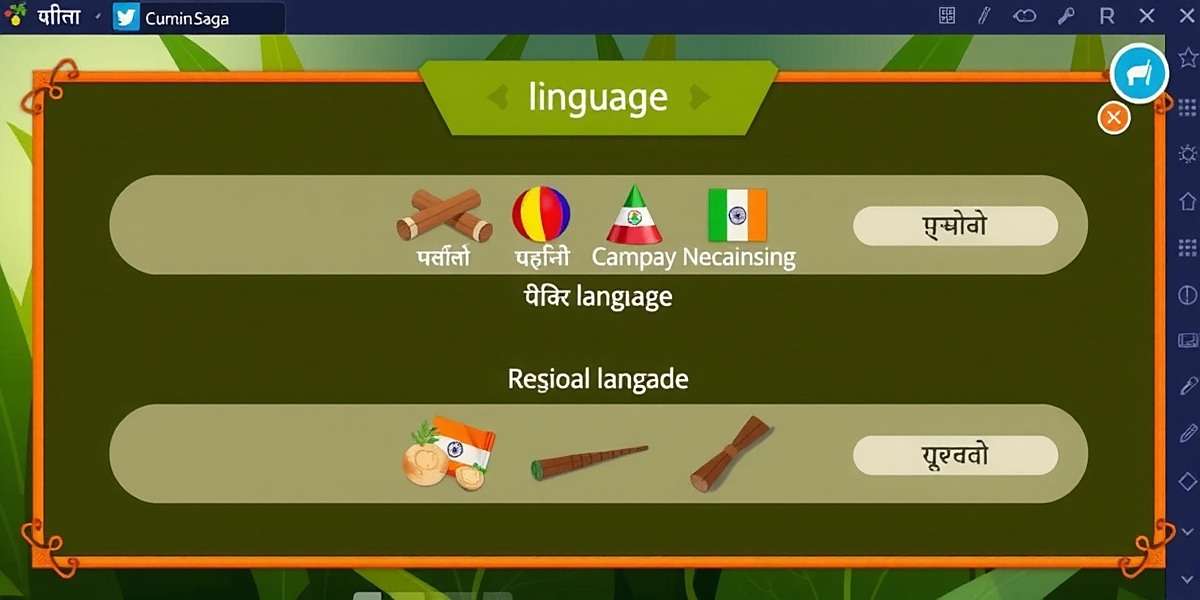
One of the most celebrated aspects of Cumin Saga Spice Journey is its commitment to authentic localization that respects India's linguistic and cultural diversity. Unlike many mobile games that offer only Hindi and English, this game has gone to great lengths to make the experience accessible and relevant to players from all regions of India.
The development team recognized that to truly capture the essence of India, Cumin Saga Spice Journey needed to speak to players in their own languages and reflect their unique cultural perspectives. This commitment has made the game a favorite among players who appreciate seeing their culture represented accurately in a digital format.
Supported Languages 🗣️
Cumin Saga Spice Journey currently supports 16 Indian languages, with more planned for future updates. Each language version has been carefully translated and adapted by native speakers to ensure authenticity:
- Hindi
- English
- Bengali
- Telugu
- Marathi
- Tamil
- Urdu
- Gujarati
- Kannada
- Malayalam
- Punjabi
- Odia
- Rajasthani
- Assamese
- Maithili
- Bhojpuri
What sets the localization of Cumin Saga Spice Journey apart is that it's not just about translation – it's about cultural adaptation. For example, when referring to a "marketplace," the game uses regionally specific terms: "haat" in North India, "sandhai" in Tamil Nadu, "bazaar" in Urdu-speaking regions, and "mandi" in Gujarat, ensuring that each player encounters terminology that feels familiar and authentic.
Regional Content Variations 🌍
Beyond language, Cumin Saga Spice Journey incorporates subtle regional variations that make the game feel personally relevant to players from different parts of India:
1. Musical Score
The game features an extensive soundtrack with region-specific music that changes as players travel across India. In Punjab, players hear energetic bhangra beats; in West Bengal, soulful Rabindra Sangeet; in Rajasthan, folk music with the rhythmic sound of dholak and harmonium; and in South India, classical Carnatic music with veena and mridangam.
This attention to musical detail has been widely praised, with many players commenting that hearing familiar regional music enhances their emotional connection to the game world.
2. Visual Elements
Character designs, clothing, and architecture in each region accurately reflect local styles. A character in Kerala wears a mundu and neriyathu, while a character in Punjab wears a kurta and turban. Buildings in each region reflect local architectural styles, from the terracotta temples of Bengal to the havelis of Rajasthan to the traditional houses of Assam.
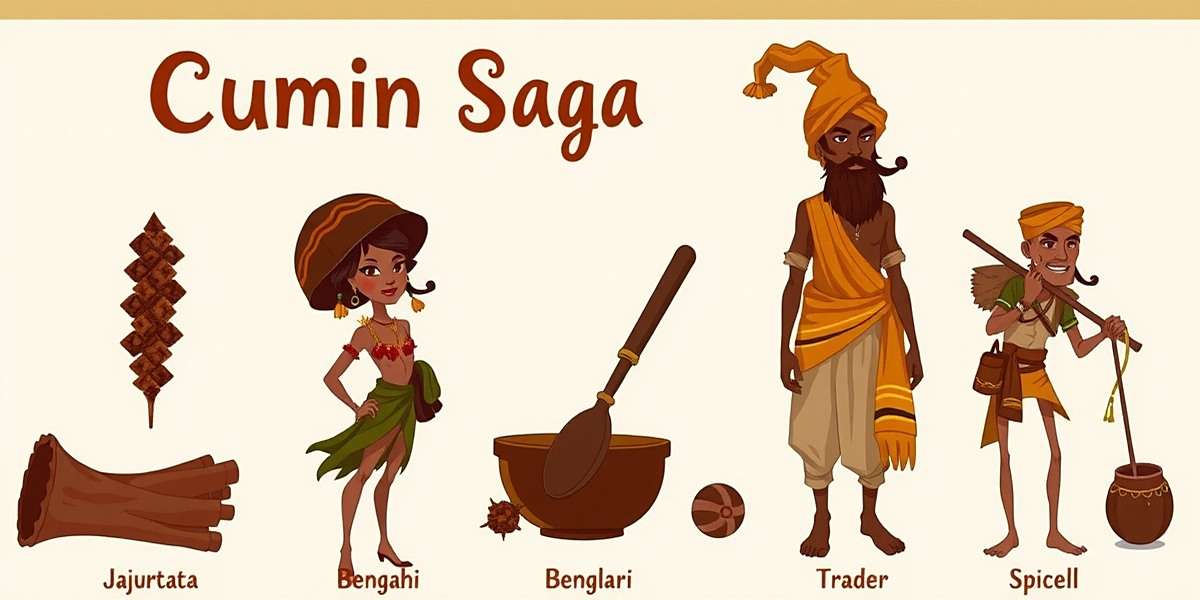
3. Culinary References
Food items and recipes in each region are specific to local culinary traditions. Players in Gujarat will encounter dhokla, fafda, and jalebi; in Maharashtra, vada pav, pav bhaji, and modak; in Tamil Nadu, dosa, idli, and sambar; and in Bengal, puchka, sandesh, and rasgulla.
The spices featured in each region are also accurate to real-life cultivation patterns, teaching players about which spices come from which parts of India.
4. Local Festivals and Traditions
Each region features its unique festivals and traditions that players can participate in. While some festivals like Diwali are celebrated nationwide, the game shows how they're observed differently in each region. Additionally, region-specific festivals like Pongal in Tamil Nadu, Bihu in Assam, and Ganesh Chaturthi in Maharashtra are featured prominently.
The localization efforts have paid off handsomely, with non-English language versions accounting for approximately 76% of total gameplay time. This statistic underscores the importance of linguistic accessibility in reaching India's diverse gaming audience.
Educational institutions across India have particularly praised the game's multilingual approach, noting that it helps students learn about cultural practices in their mother tongue, making complex concepts more accessible. Several state governments have even incorporated Cumin Saga Spice Journey into their cultural education programs.
Localized Festival Events
One of the most beloved features of Cumin Saga Spice Journey is its celebration of India's diverse cultural festivals through in-game events. These events not only add excitement and variety to the gameplay but also serve as a platform for showcasing India's rich cultural heritage to players across the country and around the world.
Each event is meticulously researched and designed in collaboration with cultural experts from the relevant regions, ensuring authentic representation while making the gameplay engaging for all players, regardless of their familiarity with the festival.
Major Festival Events 🎉
1. Diwali Celebration
Diwali is one of the biggest events in Cumin Saga Spice Journey, spanning a full week in October or November. During this time, game locations are adorned with diyas (oil lamps), rangoli patterns, and festive decorations that vary by region.
Special gameplay features include: • Lighting diyas in intricate patterns to unlock special spices • Creating colorful rangoli designs by matching patterns • Visiting different regions to experience unique Diwali traditions • Exchanging sweets with in-game characters to build relationships • Fireworks displays that players can enjoy while learning about their significance
Players particularly enjoy the regional variations of Diwali celebrations, from the Kali Puja in Bengal to the Laxmi Puja traditions in North India, giving them a broader understanding of how this national festival is observed across different cultures.
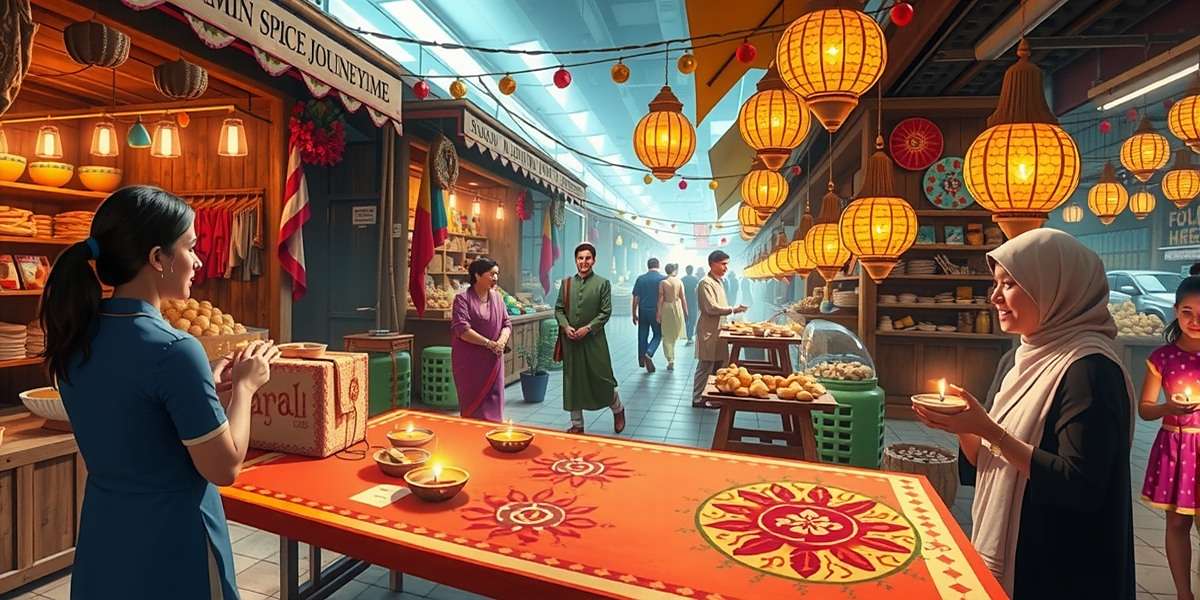
2. Holi Festival
Holi brings vibrant colors to Cumin Saga Spice Journey in February or March. The game world transforms with colorful powders, water fights, and festive music that varies by region.
Gameplay features include: • Color-throwing mini-games that temporarily boost trading relationships • Preparing traditional Holi sweets like gujiya and mathri • Learning about the legend of Holika through interactive storytelling • Regional variations like Lathmar Holi in Uttar Pradesh • Special Holi songs and dances from different regions
Many players have shared that the Holi event introduced them to regional variations of the festival they were previously unaware of, promoting cross-cultural understanding through gameplay.
3. Pongal / Makar Sankranti
Celebrated in mid-January, this harvest festival is observed differently across India, and Cumin Saga Spice Journey beautifully captures these regional variations:
• In Tamil Nadu, players participate in Pongal celebrations with rice cooking competitions and Jallikattu-inspired mini-games • In Maharashtra and Gujarat, kite-flying challenges allow players to earn special rewards • In Punjab, Lohri celebrations feature bonfires where players can offer spices and earn blessings • In Assam, Magh Bihu feasts provide opportunities to interact with village elders and learn traditional recipes
Common across all regions is an emphasis on gratitude for the harvest, with players learning about different agricultural practices and crop specialties from each area.
4. Durga Puja / Navratri
Celebrated in September or October, this festival is represented with stunning regional variations: • In West Bengal, players can visit elaborately decorated pandals and participate in cultural programs • In Gujarat, Garba and Dandiya dance mini-games improve relationships with local characters • In Karnataka, Mysuru Dasara processions feature decorated elephants that players can accompany • In North India, Ramlila performances provide historical context for certain regions
During this event, players collect special "blessings" from different forms of the goddess, each granting unique in-game benefits while teaching players about the significance of each form.
5. Eid-ul-Fitr
Marking the end of Ramadan, this festival in Cumin Saga Spice Journey features: • Special markets selling traditional sweets and spices used in Eid celebrations • Community feasts where players can contribute dishes from their spice collection • Charity events where players can donate spices to earn goodwill and special rewards • Regional variations reflecting Eid celebrations across different parts of India • Beautifully decorated mosques and homes in game locations with Muslim communities
The event has been praised for its respectful representation of Islamic traditions in India and for educating players about the important cultural practices associated with Eid.
These cultural events have become a major draw for players, with participation rates often exceeding 85% of active users during festival periods. Many players have shared that these events have helped them learn about regional festivals they were unfamiliar with, promoting cross-cultural understanding through gameplay.
Player Reviews and Testimonials
With over 2.3 million reviews across various app stores, Cumin Saga Spice Journey has maintained an impressive average rating of 4.8 out of 5, making it one of the highest-rated mobile games in India. This exceptional rating is a testament to the game's quality, cultural relevance, and engaging gameplay.
Players from all walks of life and regions of India have shared their experiences with the game, highlighting different aspects that resonate with them personally. What's particularly striking is how the game appeals to different age groups and demographics, each finding something meaningful in the gameplay.
"I absolutely love Cumin Saga Spice Journey! As someone from Rajasthan, I was thrilled to see accurate representations of our culture, from the way we dress to our traditional recipes. The Rajasthani language option is perfect - they've used words my grandmother uses that I don't even hear in everyday conversation anymore. My children are learning about our traditions while playing, which makes me very happy."
"Cumin Saga Spice Journey is a masterpiece! The attention to detail for Gujarati culture is amazing. The way they've depicted our festivals, our food, even our manner of speaking - it's all spot on. I especially love the Garba mini-game during Navratri. It's not just a game for me; it's a way to connect with my roots. I've recommended it to all my family and friends, and now we compete to see who can collect the most regional spices!"
"I've been playing Cumin Saga Spice Journey for six months now, and what keeps me coming back is the authentic representation of Bengali culture. The Durga Puja event was stunningly accurate, from the pandals to the dhak music. The Bengali language option uses proper Kolkata dialect, not some generic translation. My only suggestion would be to add more content about rural Bengal, which has such unique traditions. Overall, it's a wonderful game that makes me proud of our culture."
"As a food blogger, I was skeptical about how accurately Cumin Saga Spice Journey would represent South Indian cuisine, but I was pleasantly surprised! The spices, the recipes, the way they've depicted our marketplaces - it's all incredibly accurate. The Tamil language version is excellent, with proper regional terms that show real research went into it. The Pongal event was a joy to play, bringing back many childhood memories. This game is a must-play for anyone interested in Indian culture."
"Cumin Saga Spice Journey does a fantastic job of showcasing India's diversity. As someone who has traveled across the country for work, I'm impressed by how accurately each region is represented. The game has helped me understand cultural practices from regions I haven't visited. The only reason I didn't give 5 stars is that I found some of the puzzles in the Northeast India section too difficult without prior knowledge of the local culture. Overall though, it's an excellent game that every Indian should play."
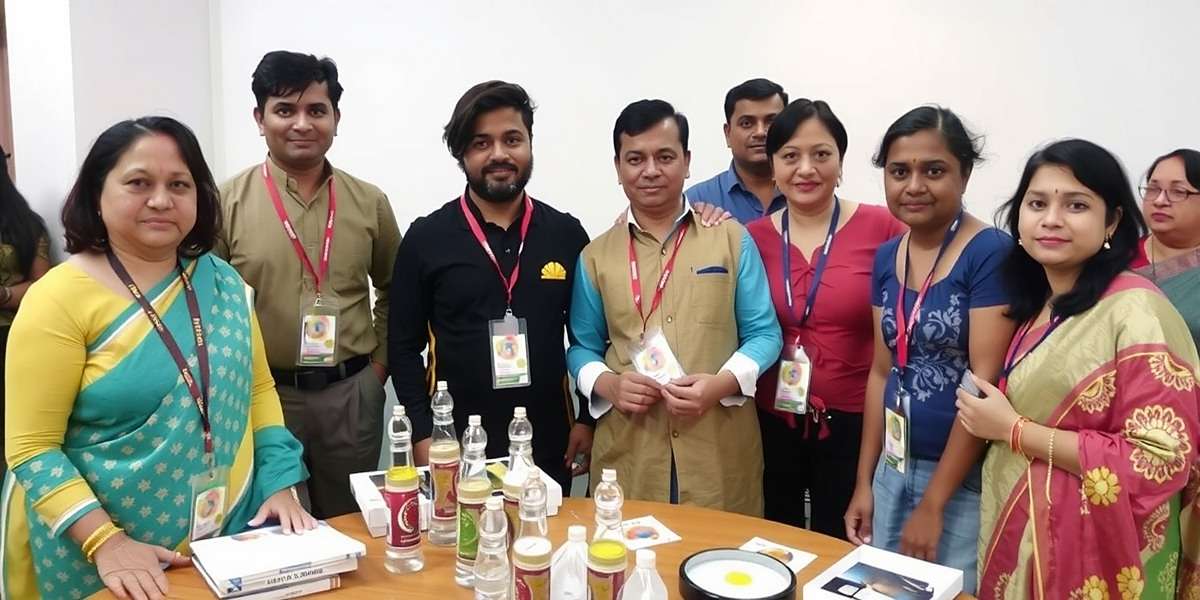
While the overwhelming majority of reviews are positive, some constructive criticism has helped shape the game's development. Common suggestions include adding more content for certain regions, increasing the difficulty levels for experienced players, and improving the multiplayer aspects of the game. The development team has been responsive to this feedback, regularly incorporating player suggestions into updates.
Notably, Cumin Saga Spice Journey has received praise from educational institutions across India. Several schools in Punjab, Karnataka, and Odisha have incorporated the game into their cultural studies and geography curricula, using it to teach students about India's diverse traditions in an engaging way.
Cultural organizations have also recognized the game for its role in preserving and promoting India's heritage. The game was awarded the "Best Cultural App" by the National Informatics Centre in 2023, a testament to its success in balancing entertainment with cultural education.
Player Community and Strategies
The Cumin Saga Spice Journey community has grown into a vibrant ecosystem of players, cultural enthusiasts, and even educators who share a passion for the game and India's rich cultural heritage. This community extends beyond the game itself, creating a space where players can connect, share knowledge, and celebrate Indian culture.
The developers have fostered this community through regular engagement, transparent communication about updates, and recognition of player contributions, creating a sense of ownership and pride among the player base.
Online Community Platforms 🌐
1. Official Social Media Groups
The official Facebook group for Cumin Saga Spice Journey has grown to over 2.4 million members, making it one of the most active mobile game communities in India. The group is highly engaged, with thousands of posts daily covering gameplay strategies, cultural discussions, and real-world recipes using spices featured in the game.
Regional subgroups have also emerged, allowing players to connect with others from their state or linguistic group. These regional groups often organize virtual events tied to local festivals and share region-specific tips that leverage local knowledge of spices and traditions.
2. YouTube and Streaming Communities
There are over 1,100 active YouTube channels dedicated to Cumin Saga Spice Journey, with content ranging from gameplay tutorials to deep dives into the cultural accuracy of the game. Several of these channels have amassed over 600,000 subscribers, demonstrating the game's strong appeal as a content creation platform.
Content creators produce videos in multiple Indian languages, making strategy guides and game updates accessible to non-English speakers. Many creators also blend gameplay with real-world information, visiting local markets and interviewing traditional cooks to provide additional context for the game's content.
3. Reddit and Gaming Forums
The game's Reddit community has over 400,000 members who engage in detailed discussions about game mechanics, cultural accuracy, and suggestions for future updates. This community is known for its analytical approach to the game, with players creating detailed guides to regional spices and optimal trading routes.
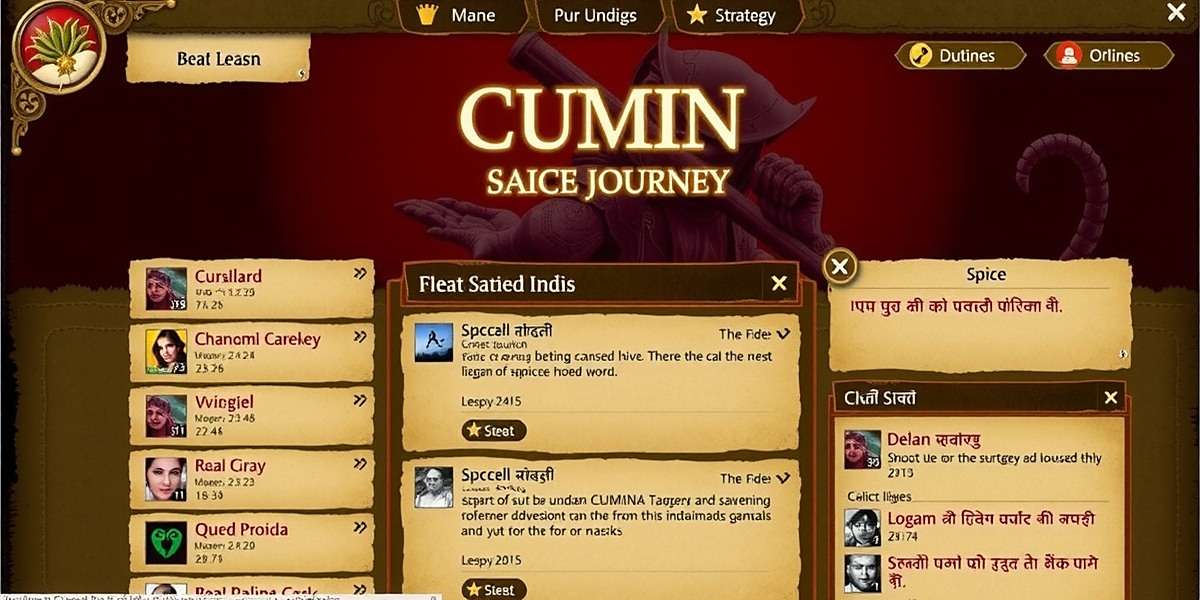
Indian Player Strategies 🧠
Indian players have developed sophisticated strategies for mastering Cumin Saga Spice Journey, drawing on both gameplay experience and real-world knowledge of Indian culture, spices, and regional traditions.
North Indian Strategies
Players from North India excel at navigating the Mughal-influenced markets of the region: • Focus on saffron from Kashmir, which maintains high value throughout the subcontinent • Take advantage of the Delhi-Agra-Lucknow trade triangle for consistent profits • Participate heavily in Diwali and Holi events for region-specific rewards • Build relationships with Mughal officials for exclusive trading rights
"In North India levels, understanding the court etiquette is crucial," advises a player from Lucknow. "Gifting high-quality saffron and cardamom to Mughal nobles can unlock trade routes that other players can't access, giving you a huge advantage."
South Indian Strategies
South Indian players often dominate maritime trade routes and leverage the region's unique spices: • Master the monsoon trading cycles that affect both prices and travel routes • Focus on pepper, cardamom, and cinnamon – South India's specialty spices • Build strong relationships with temple authorities who are major spice consumers • Participate in Pongal and Onam events for maximum regional benefits
"In South India, you need to respect the monsoons," explains a player from Chennai. "During the rainy season, focus on inland trade between cities like Madurai and Bengaluru. When the seas calm, shift to coastal routes for bigger profits."
Western Indian Strategies
Players from Gujarat and Maharashtra often excel at long-distance trade and banking: • Utilize the historical trading networks between Mumbai, Ahmedabad, and Delhi • Focus on establishing warehouses to take advantage of price fluctuations • Participate in Makar Sankranti and Ganesh Chaturthi events • Develop banking relationships for better loan terms on large shipments
"Gujarati merchants have always understood the connection between trade and banking," notes a player from Ahmedabad. "In the game, don't just trade spices – invest in banking when you can. The interest earnings can fund your biggest trading expeditions."
Eastern Indian Strategies
Players from Bengal and Odisha often specialize in riverine trade and unique regional spices: • Master the Ganges-Brahmaputra river trade routes for efficient transportation • Focus on turmeric, ginger, and regional spices like panch phoron • Participate in Durga Puja and Bihu events for maximum profits • Build relationships with local nawabs for exclusive trading rights
"The rivers are your best friend in East India," advises a player from Kolkata. "A well-timed river voyage with a cargo of high-quality turmeric can yield amazing profits, especially just before Durga Puja when demand spikes."
Future Updates and Developments
The development team behind Cumin Saga Spice Journey has outlined exciting plans for the game's future, with several major updates scheduled over the coming year. These updates aim to expand the game's cultural scope, add new gameplay features, and further enhance its educational value based on extensive player feedback.
Upcoming Features 🔜
1. Northeast India Expansion
One of the most highly anticipated updates will introduce detailed content for Northeast India, a region that is often underrepresented in mainstream media. This expansion will feature: • 8 new regions representing different states of Northeast India • Unique spices and ingredients from the region like bhut jolokia and black sesame • Cultural practices including traditional dances, festivals, and crafts • New characters representing diverse ethnic groups from the region • River and mountain exploration gameplay specific to the Northeast geography
"We've spent months researching and working with cultural experts from each Northeast state to ensure accurate representation," says the game's lead designer. "This expansion will introduce players to a rich cultural heritage that many Indians themselves are unfamiliar with."
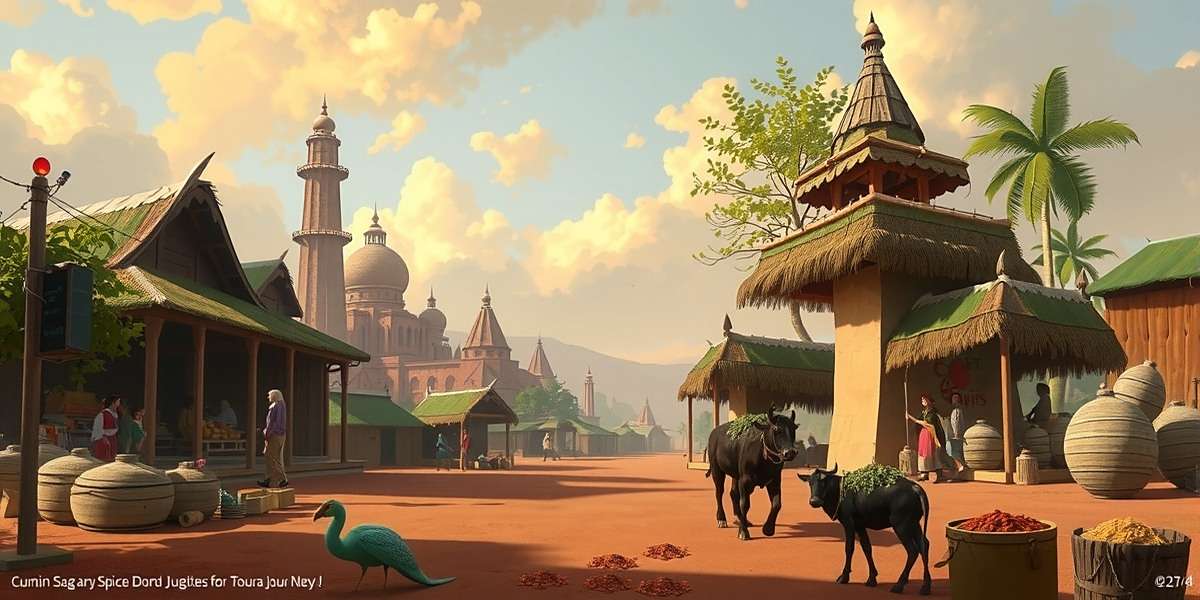
2. Multiplayer Trading Hubs
Responding to one of the most requested features from the community, the developers plan to introduce multiplayer trading hubs where players can: • Trade directly with other players in real-time • Form trading alliances and joint caravans • Compete in regional trading competitions • Establish player-run markets and warehouses
This multiplayer component will add a new social dimension to the game, allowing players to leverage their unique regional knowledge and form strategic partnerships.
3. Educational Mode Enhancement
Building on the game's educational success, an enhanced educational mode will include: • Detailed lesson plans for teachers • Interactive quizzes with detailed explanations • Virtual field trips to spice plantations and markets • Downloadable worksheets and activities • Progress tracking for educational milestones
This mode is designed to make Cumin Saga Spice Journey an even more valuable educational tool, with content aligned to school curricula across different Indian states.
4. Historical Time Periods
Future updates will allow players to travel back in time to experience: • Ancient India during the Maurya and Gupta empires • Medieval India with focus on regional kingdoms • Colonial period with emphasis on spice trade influences • Post-independence India showing culinary evolution
Each time period will feature appropriate spices, recipes, and cultural practices, allowing players to understand how Indian cuisine and spice usage has evolved over centuries.
Community Involvement in Development 🤝
The development team has emphasized their commitment to community-driven development, with several initiatives to gather player feedback: • Monthly community surveys to identify priorities for updates • Regional focus groups with players from underrepresented areas • Cultural accuracy review panels featuring both academics and passionate players • Beta testing programs for new regional content • Regular "Ask Me Anything" sessions with developers and cultural consultants
This collaborative approach has already resulted in several features being added to the game based on player suggestions, including additional regional languages, more accurate representations of certain festivals, and new spices that were important in specific regions.
With these ambitious plans for the future, Cumin Saga Spice Journey is poised to remain one of India's most popular and influential mobile games for years to come, continuing to educate and entertain players while celebrating India's rich cultural heritage.